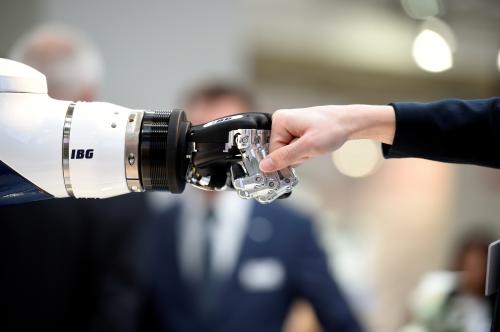With the upcoming NFL draft, the stakes are high for the league’s billion-dollar franchises. Few events represent greater opportunities than the annual talent assessment undertaken by professional football teams. In a highly competitive league with fixed salary caps, the selection of new talent can make or break football operations. If you make the right choices, your team’s fortunes can sky-rocket while personnel mistakes consign your team to below-average performance.
In this type of situation, it is little surprise that teams are deploying the latest technologies as part of their skills assessments, talent recruitment, and evaluation of injury proneness. They are using everything from biometrics and personality assessments to AI, data analytics, and computer vision to gain an edge over other teams. General managers want the latest tools in order to reach decisions that have profound consequences for their teams.
The reliance on advanced technologies is part of a growing trend in human resources of moving from human to machine-based assessment. In other areas, companies are using AI to screen candidates, evaluate job skills, and shape hiring practices. Computers are seen as less emotional and more analytical, and therefore less prone to irrational choices. Executives want to avoid situations where there are human biases, unsystematic thinking, or overly personalistic decision-making.
In relying on AI, data analytics, and computer vision, football teams are seeking to replicate baseball’s well-known use of quantitative methods to evaluate players. Popularized through the book and movie “Moneyball” that documented the Oakland Athletics, coaches are using statistical techniques and algorithms to assess player talent, situational performance, and the best strategies for making decisions.
As an illustration, the Boston Red Sox have used a system called DataRobot that tracks a variety of on- and off-field activities. Through a combination of AI and data analytics, this tool helps the club predict everything from defensive positioning of players and roster assembly to fan activation and retention. It utilizes the wealth of information regarding many aspects of the game to improve team decision-making.
Similar developments are unfolding among football teams. Using the many hours of video that are available on all the talent, there are techniques for studying player positioning and movements in order to judge how well they move and what their injury risk might be. According to Sanjay Chopra, the co-founder of the firm Cognistx,
“we have body posture techniques where we can figure out where the joints are, how far the joints are, where is your hip, how much does the shoulder tilt, the height of the knees, the separation of the knees, the separation of the feet, where the angles are pointed … the system can now look at multiple frames of information and then begin to analyze and bring insights, which humans might have missed. And now you can use those insights to better train your players.”
Through a detailed analysis of body movement and positioning, it is possible to anticipate play calls and train players to react to specific formations. Some players may provide telltale signs of a running or passing play, or of a bootleg by the quarterback, and all of this material can offer advantages to those who must defend against those options. Split-second decisions often matter quite a bit in the success or failure of particular plays.
Some organizations are deploying computer vision to study player movements. These systems chart subtle moves by various body parts in an effort to improve speed, reduce unnecessary or inefficient steps, and improve overall performance. Small imperfections in gait, velocity, or turns may increase susceptibility to injury or reduce one’s time in the 40-yard dash. With player performance measured down to the hundredths of seconds, seemingly minute shifts in timing or movements may mean the difference between being drafted in the openings rounds or not being drafted at all.
Still others teams are using AI and data analytics to determine how best to engage fans. With the increasing use of social media tools, NFL communicators seek to draw in their audience, build their fan base, and promote the public profiles of leading players. Using data-based features such as Next Gen Stats, they can track player movements, chart player speeds, and document the number of yards a player has ran as he zig-zags through the defense. He may advance nine yards, but run 25 yards for that gain.
In focusing on fan engagement, the NFL is following the lead of Hollywood. Data analytics firms in the film industry are deploying machine learning to analyze a variety of actor and storyline characteristics in order to predict which characters will resonate with audiences and yield the greatest revenues for movie studios. Actors are assigned a percentage score that gauges likely fan reception and financial outcomes.
Even with all the technology, it probably will be years before any team hires a robotic coach. Football remains a game of human judgment and intuition, and both coaches and players draw on their personal experience to improve their own movements and spot tendencies in opposing players. But with automation coming into so many fields, it may be only a matter of time before AI-based assistants and chatbots replace some organizational functions. What already is happening in finance, retail, accounting, and marketing ultimately will reach into the NFL and transform football operations.
The Brookings Institution is committed to quality, independence, and impact.
We are supported by a diverse array of funders. In line with our values and policies, each Brookings publication represents the sole views of its author(s).








Commentary
How the NFL is using AI to evaluate players
March 18, 2021